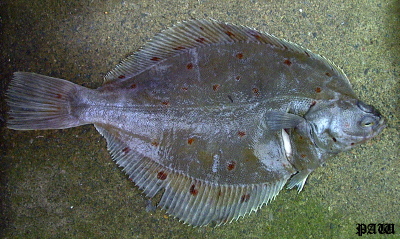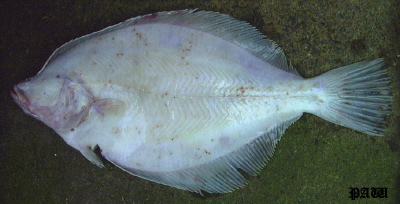Identification:
Eyes on the right, upper side, which is brown with prominent red-orange spots.
Underside white. Scales are smooth and the lateral line is almost straight.
A line of bony knobs runs along the head from lateral line to the eyes.
Breeding:
North Sea populations spawn during late winter - early spring
in depths of 20-50 m. The eggs (up to 500,000) are shed and fertilised above
the sea bed in areas of sufficient salinity for them to float, and a temperature
of around 6 degrees C. The eye moves round during the pelagic larval stage
at 35-40 days (11 mm), and the miniature adult becomes bottom living at 45-50
days. Maturity is reached at 5-7 years (North Sea stock) at 33-43 cm.
Habitat:
Bottom-dwelling on sand and muddy substrates. May inhabit depths of
over 100 m, but usually found at 10-50 m, with younger fish closer inshore.
Food:
Worms and crustaceans, with bivalves and small fish featuring in the diet
of larger plaice.
Range:
Throughout UK waters.
Additional Notes:
The plaice is an important commercial fish. North Sea landings of plaice
reached a record high in the early 1990s, leading to a sharp decline in spawning
stock to a level outside safe biological limits.
|

